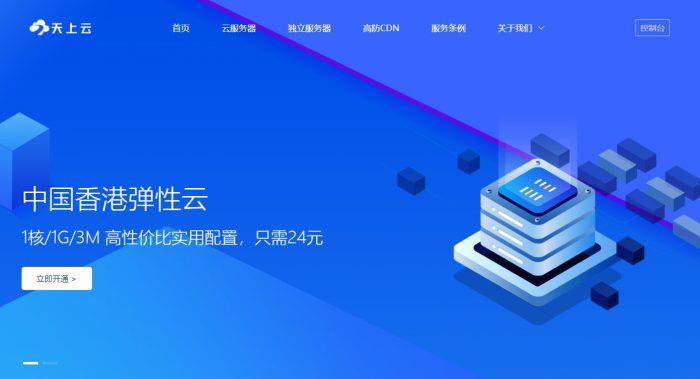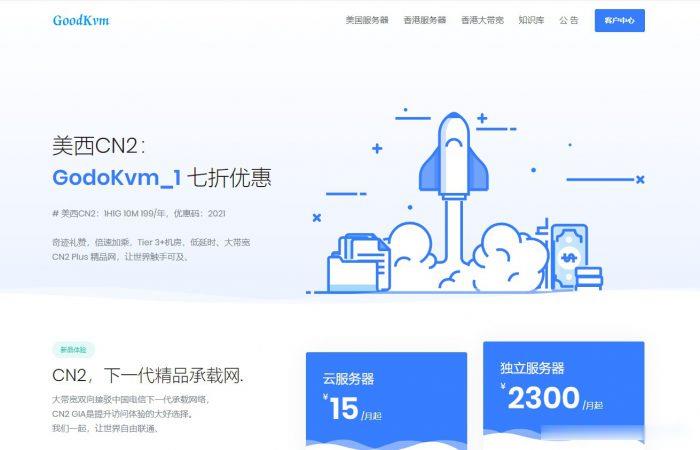Max163
www.163.com.cn 时间:2021-02-07 阅读:()
ResearchonInventoryControlPoliciesforNonstationaryDemandbasedonTOCLengKaijun*ResearchcenterofHubeiLogisticsdevelopment,HubeiUniversityofEconomics,No.
8,YangQiaohuroad,JiangxiaCanglongdevelopmentzones,Wuhan,430205,ChinaWangYuxiaDepartmentofInformationandEngineering,WuhanUniversityofTechnologyHuaxiaCollege,No.
589,Guanshanroad,Eastlakehigh-techindustrialdevelopmentzone,Wuhan,430223,ChinaE-mail:Wangyuxia0318@163.
comwww.
hbue.
edu.
cnAbstractAneffectiveinventoryreplenishmentmethodemployedinthesupplychainisoneofthekeyfactorstoachievinglowinventorywhilemaintaininghighcustomerdeliveryperformance.
Thestateofdemandprocessisoftennotdirectlyobservedbythedecisionmaker.
Thus,inmanyliteratures,theinventorycontrolproblemisacomposite-state,partiallyobservedMarkovdecisionprocess(POMDP),whichisanappropriatemodelforanumberofdynamicdemandproblems.
Inpractice,managersoftenusecertaintyequivalentcontrol(CEC)policiestosolvesuchaproblem.
However,inreality,TheoryofConstraints(TOC)hasbroughtapracticalcontrolpolicythatalmostalwaysprovidesmuchbettersolutionsforthisproblemthantheCECpoliciescommonlyusedinpractice.
Inthispaper,weproposedthreedifferentinventorycontrolpoliciesbasedonTOCbuffermanagementframework,andusesimulationapproachtocomparethemwithtraditionaladaptive(s,S,T)policy.
Thecomputationalresultsindicatehowspecificproblemcharacteristicsinfluencetheperformanceofwholesystemanddemonstratetheefficiencyoftheproposedcontrolpolicy.
Keywords:Inventorycontrolpolicy;Nonstationarydemand;Theoryofconstraints;Buffermanagement*Correspondingauthor.
Tel.
:+86-027-81973740;Fax:+86-027-81973739.
E-mailaddress:kaijunlen@yahoo.
com.
cn(LengKaijun)1.
IntroductionAsupplychainisasetofnodeswhichconsistofproductionplants,centralwarehouse,regionalwarehousesandpointsofsales.
Thechainlinkssuppliesandcustomers,beginningwiththeproductionofproductsbyasupplier,andendingwiththeconsumptionofaproductbythecustomer1.
Theneedforregionalwarehousestemsfromtheneedtosupplythemarketveryquickly.
Inthebusinessmarketofflamingcompetitioninrecentyears,companiesareplaguedbythefluctuationsindemandandinevitablypresentinventorymanagementchallengesoftherightinventoryintherightplace(node)attherighttime.
Aneffectiveinventoryreplenishmentmethodemployedinthesupplychainisoneofthekeyfactorstoachievinglowinventorywhilemaintaininghighcustomerdeliveryperformance.
Mostinventorycontrolproblemsexistinsituationsinwhichdemandisbothnonstationaryandpartiallyobserved.
Bynonstationary,wemeanthattheprobabilitydistributionofthedemandchangesovertime.
Furthermore,thetrueunderlyingdistributionofthedemandinaperiodisneverdirectlyobserved;itisonlypartiallyobservedthroughtheactualdemandvalues.
Undertheseconditions,inventorymanagersestimatetheunknowndemanddistributionandtypicallyusesomeK.
J.
Leng,Y.
X.
Wangtypeofcertaintyequivalentcontrol(CEC)policy—whichassumestheestimateiscorrect—todetermineaninventorystockinglevel.
Forexample,amanagermayforecastthedemandmeanandvarianceoverfuturetimeperiodsandusetheseestimatesinatraditionalinventorymodeltosetstockinglevels.
Theresultspresentedinthispaperdemonstratethatthereexistotherpracticalsuboptimalcontrolpoliciestosolverealisticinstancesofthisproblemwithoutassumingsuchanestimate.
Furthermore,thesecontrolpoliciesachievemuchbetterperformancethantheCECpoliciescommonlyusedinpracticeinalmostallthecasesthatwereconsidered.
ThesesuboptimalpoliciesincludeOpen-LoopFeedbackControlandLimitedLook-AheadControl.
Bothofthesepoliciesaccountformoreoftheinherentuncertaintyinthedemandprocessand,therefore,almostalwaysachievelowerexpectedcostthantheCECpolicies.
However,aneffectivereplenishmentmethodshouldresolvethefollowingthreebasicissues:(1)howoftentheinventorystatusshouldbedetermined.
(2)whenareplenishmentordershouldbeplaced.
and(3)howlargethereplenishmentordershouldbe.
Replenishmentmethodsproposedinthetraditionalinventorytheorycanbeclassifiedaseithercontinuousreviewsystems((s,S)or(s,Q)policy)orperiodicreviewsystems((R,S)or(R,s,S)policy)2.
However,researchesreportthatorderbasedonthesereplenishmentmethodsswingduetodownstreamsupplychainpartners'fluctuationofdemand.
Theswingisamplifiedastheordermovesuptothesupplychain.
Thisphenomenonofdemandamplificationisnamedasbullwhipeffect.
Bullwhipeffectcausesexcessiveinventory,lossofrevenue,andinaccurateproductionplansthroughoutsupplychainsystems3.
Theimprovementofbullwhipeffectinasupplychainisakeychallengeforamanager.
TheTheoryofConstraints-supplychainreplenishmentsystem(TOC-SCRS)isoneofthesolutionsfortheimprovementofthebullwhipeffectinamulti-echelonsupplychain4.
However,whentheTOC-SCRSisappliedinaplantoracentralwarehouse,thedeterminationofRRTwillencounteraconflictwiththereplenishmentquantity.
Thatisbecausethereplenishmentfrequencydependsonthesetupfrequencyintheplantandthereplenishmentleadtimedependsontheproductionleadtime.
Asweknow,however,thesetupfrequencyandthereplenishmentleadtimeintheplantdependontheproductionquantity(i.
e.
,replenishmentquantity).
Itmeansthatthereplenishmentfrequencyandthereplenishmentleadtimemustdependontheknownreplenishmentquantity,especiallyundertheconstraintoflimitedplantcapacity.
However,inTOC-SCRS,thereplenishmentquantitydependsontheknownparametersofthereplenishmentfrequencyandthereplenishmentleadtime.
Therefore,thisisabigconflictandanissuetoapplytheTOCSCRSinaplantoracentralwarehouse.
AnenhancedreplenishmentmodelforTOC-SCRSundercapacityconstraintisthenrequiredtobeprovidedtosolvethisconflict5.
AlthoughTOC-SCRSconcepthasbeenimplementedbyagrowingnumberofcompanies,itsmodelisnotdescribedintheliteratures.
ThemodelofTOC-SCRSbasedonpreviousresearch6isthenmodeledinthispaperfirst.
ThenthreedifferentenhancedinventorycontrolpoliciesforTOC-SCRSundercapacityconstraintisthendeveloped.
Asimulationcomparisonanditssensitivityanalysisareutilizedtoevaluatetheapplicationoftheproposedmethod.
2.
LiteraturereviewTheinventorycontrolliteraturecanberoughlycategorizedintofourclasses.
First,thereareproblemswithfullyobservedandstationarydemandthatformthebodyofmostoftheclassicalinventorytheory.
Leeetc.
summarizethisclassicaltheoryquitewell7.
Second,thereareproblemswithfullyobservedandnonstationarydemand.
Theseproblems,althoughmorecomplex,havebeenstudiedfairlywellalso,e.
g.
,rareresearchisavailableforthethirdandfourthclassesofproblems,thosewithpartiallyobserved,stationarydemand,andthosewithpartiallyobserved,nonstationarydemand.
Thispapermainlyfocusesonthecaseofnonstationarydemandparticularlyontheseasonaldemandfluctuation,butfirst,wereviewliteraturesfortheserelatedproblems.
OneoftheearliestcasesofastochasticnonstationarydemandproblemisfoundinLiterature8Shortlypriortothat,Literature9hasanalyzedadynamicsystem(nonstationaryandstochastic)inwhichthedistributionofdemandcanvaryeachperiod,anditisanextensionoftheArrow-Harris-Marshakdynamicinventorymodel,andthefinalsectiondiscussescasesof"partialinformation,"inwhichanunknownparameterofthedemanddistributionhasanaprioridistributionandthedistributionisstationary.
Morerecently,someliteratureshavediscussedageneralmodelingframeworkinafluctuatingdemandenvironmentmodeledbyaMarkovchain,inwhichdemonstratedhowinventoriesshouldbemanagedinthefaceofpossibleobsolescenceusingasimilardemandmodel10.
Althoughtheirdemandmodelissimilartotheonepresentedinthispaper,thecriticaldifferenceisthattheirmodelassumesthatthecurrentdemandstateisdirectlyobserved.
Somehasproposedanadaptivebasedstockinventorypolicyforanonstationaryprobleminwhichthedemandmodelisanintegratedmovingaverage.
ProblemswithpartialinformationaresignificantlyTOCinventorycontrolpolicymoredifficulttosolve.
StationarypartialinformationproblemsmaybesolvedbyBayesianmethodsorotheradaptiveprocedures.
SomescholarsignificantlyextendedtheearlyresultsofBayesianmethodsandsomeothersusesamyopicparameteradaptivetechniqueandasimpleinventorypolicybasedonacriticalfractile,inwhichthedemandmodelissimilartotheoneusedinthispaper,butinthiscasethecriticaldifferenceisthatthecoreprocessisstationary.
Afterwards,somescholarextendsthisanalysisofmyopicpoliciesbyconsideringpoliciesthatterminatethemyopicbehavioratsomepointT,whichmaybefixedorrandom.
Thensomescholarshaveprovidedadditionalinsightsintothestationarypartialinformationproblem.
Literature11demonstrateaMin-Maxtechniqueforanalysisofvariousdistribution-freefinitehorizonmodelsforwhichthedistributionisspecifiedbyalimitednumberofparameterssuchasthemeanandvarianceorasetofpercentilesofdemand.
Basedonthat,somescholarstartconsiderBayesiantechniquesforalostsalesprobleminwhichsales,nottruedemand,areobserved.
Becauseoflostsales,theretailercanlearnmoreaboutthetruedemandprocessbyholdinginventoryatahigherlevelinitiallytoquicklyestablishabetterestimateofthetruedemand,andsomeotherliteratureshaveexaminedlostsalesandcontendthatthenegativebinomialfamilyprovidesaverygoodfitforactualretailingsalesdata.
Problemswithnonstationarydemandandpartialinformationpresentanevenmorecomplexsituation.
Littledirectworkhasbeendoneinthisarea,but,thereisgreatpotentialimpactforresearchonthisclassofproblems.
Insummarize,therearemanyliteraturespresentedagrowthmodeltoestimatetheparametersofademandprocessoveritsentirelifecycle.
Intheirbasecase,productiondecisionsaremadeatthebeginningoftheproblemfortheentirelifecycle,andsomeofthempresentedatechniquetoinitiallyestimatetheparametersoftheirforecastingmodel12.
However,theseissuesstillremainthesameinreality.
In1979,developmentoftheTheoryofConstraints(TOC)managementphilosophybeganwiththeintroductionofOptimizedProductionTimetablesschedulingsoftware13.
TOChasevolvedfromthissimpleproductionschedulingsoftwareprogramintoasuiteofintegratedmanagementtoolsencompassingthreeinterrelatedareas:logistics/production,performancemeasurement,andproblemsolving/thinkingtools14.
Duetoitssimpleyetrobustmethodology,applicationofTOCtechniqueshavebeendiscussedintheacademicliteratureandpopularpressacrossavarietyofoperationsmanagementsubdisciplines.
StudiesreportinganecdotalevidencefromearlyadopterssuggestedthatTOCtechniquescouldresultinincreasedoutputwhiledecreasingbothinventoryandcycletime15.
RigorousacademictestinghasvalidatedthoseearlyfindingsrevealingthatmanufacturingsystemsemployingTOCtechniquesexceedtheperformanceofthoseusingManufacturingResourcePlanning(MRP),LeanManufacturing,AgileManufacturing,andJust-in-Time(JIT).
Theresultsofthesestudiesindicate16thatTOCsystemsproducegreaterlevelsofoutputwhilereducinginventory,manufacturingleadtime,andthestandarddeviationofcycletime.
TheTOCreplenishmentsolutionutilizesthisfact,asolutionthatwehavealready.
Holdtheinventoryatthemostaccuratepoint.
Thisisnotveryaccurate,butitisthemostaccuratepointofthesystem.
Atthesource--attheplantinmostcasesisthemostaccuratepointofthesystem.
Thatiswherewehavethebiggestaggregation.
TOCstates6thataggregatingtheinventoryandholdingitattheplantwarehousenotonlydecouplesproductiondisruptionfrombullwhipeffect,butalsoincreasesthereliabilityofthereplenishmentofthegoodstotheregionalwarehouse,bymakingthereplenishmenttimeequaltothetransportationtimeonly.
Accordingly,hoardinginventoryinthedistributionchainisrenderedunnecessaryandotherlinksneednotattempttooverprotectthemselveswithexcessiveinventory.
Thegoalofhavingtherightinventoryattherightplaceattherighttimecanthusbeachieved.
Thesolutioniseffective.
However,determiningtherightamountofbufferandperforminginventorybuffercontrolaltheplantwarehouseandregionalwarehousesremainsanissue.
Variousmathematicalmethodshavebeenappliedtodetermineoptimumbuffersize.
whendemandratevarieswiththetime,thetriggerrulesshouldadjusttoaccompanythedemandchange.
SilveretcusesrollinghorizonoflengthR+L(reviewperiodandleadtime)approachthatallowsthedemandratevarywithinthecurrenthorizonbyusingsafetystockconsiderationstodecidewhentoplaceanorder,followedbythedeterministicSilverMealheuristictoselectthesizeofthethencurrentreplenishment17.
InadditiontoSilver,manyotherscholarsalsoaddressedthisproblemaswell.
SomedevelopsastochasticversionoftheWagner-Whitinmodel.
However,thesemodelshavedrawbacksfrompractitioner'sstandpoint.
somesuggestaheuristicmethod,knownastherevisedpowerapproximation.
Asomewhatsimilarapproachwaspresentedinliterature18whichhavedevelopedanaccurateapproximationforbothsandQwhenafillrateisused.
Theirapproximationcanbebuiltonaspreadsheetveryeasily.
Somehavedevelopedamyopicheuristic,involvedprecomputingthe(s,S)valuesforvariousvaluesofmeandemand.
However,thisheuristicshouldbeavoidedifdemandisexpectedtodeclinerapidly.
ManyothershavedevelopedafastalgorithmforfindingtheoptimalsandSforgivenRandfordiscretedemanddistributions.
However,thisalgorithm,K.
J.
Leng,Y.
X.
Wangusingaprogramminglanguage,isbestdevelopedonacomputerratherthanaspreadsheet.
Basedonthis,manyscholarshavesuggestedsomeheuristicmethodsfordeterminingthereorderpointinthecontinuousreviewcontextforaproductwithunequal,discretestockwithdrawalsunderdeterministicconditions.
Researcheffortsinthisregardhavenotbeenadequatetodate.
Literature19extendedthestudyandusesimuiationheuristicprocedurestodesignmechanismsfortriggeringset-upsofreplenishment.
Additionalrelatedworkonthisproblemincludesliterature20-22.
TOCbuffermanagementisfeasibleandpowerful,butisnotsufficientlyrigorous.
Arigorousproceduremustbedevelopedtoimplementthemethodeffectivelyintherealworld,especiallyifthemethodistobecomputerized.
Nosuchmethodisyetavailableintheliterature.
Therefore,thispaperproposesagenericbuffermanagementprocedure,basedonTOCbuffermanagementthatwilldefinerigorouslyamonitoringapproachforsizingthebuffer,monitoringthebufferandadjustingitaccordingly.
Agenericprocedureisonethatshouldbefurthertunedforapplicationinaspecificarea.
Furthermore,ansimulationbasedcomparisonillustratesthefeasibilityoftheproposedprocedure.
3.
BasicModelandNomenclaturePriortointroducingtheproposedpoliciesanddescribetheirdetailedprocedure,andforabetterunderstandingoftheirexposition,inwhatfollowswefirstpresentthenomenclaturethatisusedthroughoutthispaperandthebasicmodelbasedonTOC.
Nomenclature:QLRegularreplenishleadtimeTOrderreviewperiod,whichistheregulartimeintervalbetweenthereorderpoints.
Thebufferprocedureregularlyreplacestheorderateachorderreorderpoint.
ELEmergencyreplenishmenttime,whichistheshortesttimerequiredtoreplenishtheemergencyorder.
()RtOrderarrivedquantityattperiod()QOtRegularorderquantityattperiod()EOtEmergencyorderquantityattperiod()ITtOn-roadstockquantityattperiod1()ILtOn-handstockquantityatthebeginningoftperiod1()IPtStocklevelatthebeginningoftperiod,whichincludeon-roadstockquantity2()ILtOn-handstockquantityattheendoftperiod()DtDemandquantityattperiod()BLtBackorderquantityattperiodquantity,whichmeansstockouthappensatthetime()DStDemandmeetingquantityattperiodQARegularordercostpertimeEAEmergencyordercostpertimeHHoldingcostperSKUinoneperiodBBackordercostperSKUinoneperiodpSalepriceperSKU()uStTargetbufferstocklevel()dStSafetybufferstocklevel()TStSvaluewhileusing(,,)SsTcontrolpolicy()Tstsvaluewhileusing(,,)SsTcontrolpolicyWeconsideradiscreteinventorycontrolsysteminthemodel,andsequencesofeventsineachperiodare:(a)Orderreceipts;(b)Inventoryverification,includingon-handstock,on-roadstockandstocklevelaswell;(c)Demandforecasting;(d)Placetheorder;(e)Meetthedemand,theshortagequantitywouldbecomebackorderandneedstobedeliverednexttime;(f)Inventoryverificationagainandcalculatethethroughput(netprofit).
AsshowninFig1:(a)(b)(c)(d)(e)(f)UnitreplenishperiodperiodsFig.
1.
EventsequenceoftheinventorycontrolsystemBasedontheNotationandassumptionsabove,aswellastheeventsequenceintheinventorycontrolsystemsettings,aftercertainperiods,wehave:QQEERtOtLOtL1)Thefunctionofon-handstockis:11()(1)()(1)ILtILtRtDt2)Asforthebackorder,wehave:()1BLnDnILn+=(3)Inwhich:()max{,0}xx+=,()max{,0}xx=Thus,()0BLt>indicatesthatstockouthappensintheperiod,andthedemandmeetingquantityis:{}()min()(1),()DStDtBLtILt+=+-(4)TOCinventorycontrolpolicyOn-roadstockisanotherimportantfactorinthemodel,withitsfunction:11QELLQEkkITtOtkOtk===+∑∑(5)Thenwehavethestocklevelatthebeginningofattperiod:11IPtILtITt=+(6)Whilewecalculatethethroughputofthewholesystem,averagethroughputinNperiodswillbeconsidered:TPNTRNOENTCN=(7)Inwhich()TRNstandsfortheaveragesalesvalue;()OENstandsfortheorderingcost,whichincluderegularordercostandemergencyordercost;()TCNstandsforthetotalholdingcost,whichincludebothholdingcostandbackordercost:()()11()()NtTCNHILtBILtN+==*+*∑(8)Totalcostobviouslydependsontheorderfrequencyandquantityeachperiod.
Sometimesthroughput()TPNcouldbeconsideredasthenetprofitofthesystem,whichwillbecalculatedas:11()()NtTRNpDStN==∑(9)ThebasiccontrolprocedureisassameasthegeneticbuffermanagementframeworkproposedinRef.
6.
Monitoringwindow(MW)mechanismalsohasbeensetinourmodel,whichisstillatimeintervalthatfunctionsasareferencefortrackingthebufferconsumptionstatusanddecidingwhichactionmustbetaken.
Themonitoringwindowshouldbehigherthantheaveragereplenishmenttimebetweenshipments.
Themonitoringwindowisresetunderthefollowingconditions.
(1)Duringthemonitoringwindow,nosafetybufferpenetrationoccurs;thegreenbufferisadjustedandanewmonitoringwindowisresetattheendofthepreviousmonitoringwindow.
(2)Whenevereitherthesafetybufferlevelorthetargetbufferlevelisadjustedduringthemonitoringwindow,themonitoringwindowisresetfromtheperiodwhichfollowstheoneinwhichthebufferwasadjusted.
Wheneverthemonitoringwindowisreset,thebufferconsumptionstatusofthepreviousmonitoringwindowisexcludedfromthedecisionregardingthisnewmonitoringwindow.
Theinventorycontrolsystemoperateswithfollowingrules:(1)Targetbufferstockleveladjustsrules.
Penetrationofthesafetybufferisfirstcheckedfor,ifnopenetrationhasoccurred,thenifthemonitoringwindowhasended,thenthetargetbufferstocklevelisdecreased,themonitoringwindowisresetandthenextmonitorisinitiated.
Thegreenbufferlevelisreducedbecausethelackofsafetybufferpenetrationimpliesthatthetargetbufferstocklevelistoohigh.
Meanwhile,Ifstockoutdoesoccur,anemergencyorderisplacedandthetargetbufferlevelisincreasedbecausethetargetbufferstocklevelistoosmall.
Again,themonitoringwindowwillberesetandthenextmonitorinitiatedsincethetargetbufferstocklevelhasalsobeenadjusted,asshowninFig2.
Fig.
2.
Targetbufferstockleveladjustprocedure(SourceRef.
6)(2)Safetybufferstockleveladjustsrules.
Ifthesafetybufferispenetrated,butthisdoesnotrepresentthesecondpenetrationofthesafetybufferwithinthemonitoringwindow,wecheckifthestockoutoccurs.
Ifstockoutdoesnotoccur,onlytheemergencyreplenishmentorderistriggered,ifstockoutdoesoccur,anemergencyreplenishmentorderofthesameamountistriggeredbutthesafetybufferlevelisincreasedK.
J.
Leng,Y.
X.
Wangbecauseboththegreenandthesafetybufferlevelsaresettoolow.
Adjustingthesafetybufferlevelallowsthemonitoringwindowtoberesetandthenextmonitortobeinitiated.
Asstatedabove,theactualsizeofthebufferisnotcriticalaslongasthebufferstatuscontinuestobemonitored.
Therefore,theextenttowhichthesafetyorgreenbufferlevelsshouldbeincreasedordecreasedisalsosubjective.
Ifthesafetybufferispenetratedbutitrepresentsthesecondpenetrationofthesafetybufferwithinthemonitoringwindow,wecheckifthestockoutoccurs.
Ifstockouthasnotoccurred,thenanemergencyreplenishmentorderisreplacedandthesafetybufferlevelisdecreased,becauseintwocasesofpenetration,thesafetybufferlevelmayhavebeensettoohigh,asshowninFig3.
Again,themonitoringwindowwillberesetandthenextmonitorinitiated,sincethesafetybufferlevelhasbeenadjusted.
TheentireadjustprocedureoftheinventorycontrolsystemcouldbesimplydemonstratedinFig4.
Fig.
3.
Safetybufferstockleveladjustprocedure(SourceRef.
6)(3)Orderrules.
EveryTperiods,therewouldhavearegularorder,theorderquantitysetas:11()(),()()(),uQuStILtTLOtStIPtTL>=≤(10)Meanwhile,everypenetrationintothesafetybufferwouldtriggeranemergencyorder,withitsquantitysetas:()()()2udEStStOt+=(11)DifferfromRef.
6,weconsiderthatthepurposeofemergencyorderistoregaintheon-handstockleveltosafetystocklevelassoonaspossible.
Thuswesetthequantityofeachemergencyorderas:1EdOtStILt=(12)It'sobviouslythatthedynamicadjustprocedurewouldgreataffecttheperformanceofthesystem.
Unfortunately,quantitiveresearchinthisareaarestillrare,manyrelativeliteraturesarestillusesubjectiveadjustmethodinbuffermanagement.
SimilartoRef.
6,first,wesetthedynamicadjustprocedurewithrandomness:(1)()(1)uuStStrand13)(1)()(1)ddStStrand14)Inwhichrandarerandomnumbersrangesfrom0-1.
Forsimplicity,wenamethisinventorycontrolpolicyasTOC1.
4.
DiverseInventoryControlPoliciesBasedontheframeworkabove,weproposedtwonovelinventorycontrolpolicies.
1.
Withdropcompensateideologywhichisactuallyanafterwardsadjustprocedure,wesettheadjustrulesa(1)Ifnopenetrationintosafetybufferhasoccurred,thenthemonitoringwindowhasended,andthetargetbufferstocklevelisdecreasedas:{}1()()minuudStStILtLenILtSt(15)inwhichLenstandsforthelengthoftheMW.
(2)Ifthesafetybufferispenetrated,wecheckifthestockoutoccurs,andifstockoutdoesoccur,anemergencyreplenishmentorderofthesameamountistriggeredbutthesafetybufferlevelisincreasedas:TOCinventorycontrolpolicy(1)min()(1),()2QdduLStStDtkSt(16)Inwhich(0,1)k,anditmakesurethatthesafetybufferlevelwouldnotexceedthetargetbufferstocklevel.
(3)Ifpenetrationofthesafetybufferhasoccurred,andstockoutdoesoccur,anemergencyorderisplacedandthetargetbufferlevelisincreasedas:(1)2QuuLStStDt17)(4)Ifthesafetybufferispenetratedanditrepresentsthesecondpenetrationofthesafetybufferwithinthemonitoringwindow,andstockouthasnotoccurred,thenanemergencyreplenishmentorderisreplacedandthesafetybufferlevelisdecreasedas:{}(1)()minddStStILtLenLentILt18)inwhich()LentstandsfortheresttimeoftheMW.
Forsimplicity,wenamethisinventorycontrolpolicywithdropcompensateideologyasTOC2.
Informationinitialization(inventory,leadtimeetc.
)DemandPresentChecktheorderandupdatetheinventoryinformationPenetrationintosNoPenetrationjudgmentOnetimeTwotimesStockoutStockoutEmergencyorderEmergencyorderEmergencyorderEmergencyorderIncreaseSBLIncreaseTBLDecreaseSBLResetMWimmediatelyResetMWafterwardsChecktheregularreplenishorder,updateinventoryinformationafterretrievalDecreaseMWResetMWafterwardsYesYesYesNoNoFig.
4.
AdjustprocedureoftheinventorycontrolsystembasedonTOC2.
Asdemandforecastremainsabigissueinreality,weproposedanotherinventorycontrolpolicybasedondemandforecasting.
Eventhoughtherearemanyforecastingmethodbeingappliedinreality,nomatterwhichonehasbeenchoseninprocedure,wenote()fDtastheforecastingdemandquantityforthenextperiod,andtheadjustrulesaresetas:(1)Ifnopenetrationintosafetybufferhasoccurred,thenthemonitoringwindowhasended,andthetargetbufferstocklevelisdecreasedas:K.
J.
Leng,Y.
X.
Wang{}(1)min()min(ufQQfuStDtTLLDtSt19)(2)Ifthesafetybufferispenetrated,wecheckifthestockoutoccurs,andifstockoutdoesoccur,anemergencyreplenishmentorderofthesameamountistriggeredbutthesafetybufferlevelisincreasedas:{}(1)maxdfQdStDtLSt+=*(20)(3)Ifpenetrationofthesafetybufferhasoccurred,andstockoutdoesoccur,anemergencyorderisplacedandthetargetbufferlevelisincreasedas:{}(1)max()min(ufQfQuStDtLTDtLSt21)(4)Ifthesafetybufferispenetratedanditrepresentsthesecondpenetrationofthesafetybufferwithinthemonitoringwindow,andstockouthasnotoccurred,thenthesafetybufferlevelshouldbeadjustas:{}(1)mindfQdStDtLSt+=*(22)Forsimplicity,wenamethisinventorycontrolpolicybasedondemandforecastingasTOC3.
Furthermore,forpersuasivepurpose,weintroducedanadaptive(s,S,T)inventorycontrolpolicyinthesimulationofourcomparison.
Inwhichtheparametersaresetas:()()()()min{TQfTTQfstLDtStstLTDt==+(23)andtheorderquantityQSs=everyTperiods,otherprocessareassameas(s,S)policy.
5.
SimulationandAnalysisAsnonstationarydemandcharacteroftenappearasshorttimedemandfluctuationinreality.
AndARIMAmodelhasshownitsefficiencyinshortperiodforecasting,thus,weimplementARIMAinoursimulationfordemandforecastmodule,thenwehavetouseexponentialsmoothingmethodtoeliminatetheseasonaleffect:()()(1)1((1)(1))fffDtDtDtDtθInwhichqstandsforthepredictioncoefficients.
Andweusefollowingfunctiontosimulatethedemandfluctuation:11(1),01,01()(1)(1)ttttDDtDtμεαγμαγεε=+≤<<6θ=,0.
6γ=.
Thesimulationisrunningwith120saleperiods,withoutlossofgenerality,demandfluctuationinthelast20periodsaresteadyandsmooth,asshowninFig5.
020406080100120510152025303540PeriodsQuantitiyCurveofDemandandDemandforecastingDemandDemandforecastingFig.
5.
CurveofdemandanddemandforecastingOtherimportantparametersforTOCcontrolpoliciesaresetas:3QL=,1EL=,5T=,6MWT=andforadaptive(s,S,T)policy,wesetthereplenishreordercheckperiodassameastheTOCpolicy.
Thecomparisonofon-handstockvariationfordifferentinventorycontrolpoliciesareshowninFig6-Fig9FromtheFigures,wefoundthatTOC3and(s,S,T)policyperformedbetterthantheothertwoTOCinventorycontrolpolicy020406080100120-150-100-50050100PeriodsQuantityTOC1controlpolicyOn-handinventoryFig.
6.
On-handinventorycurveofTOC1controlpolicy020406080100120-100-50050100150200250300350PeriodsQuantityTOC2controlpolicyOn-handinventoryFig.
7.
On-handinventorycurveofTOC2controlpolicy020406080100120-60-40-20020406080100120PeriodsQuantityTOC3controlpolicyOn-handinventoryFig.
8.
On-handinventorycurveofTOC3controlpolicyK.
J.
Leng,Y.
X.
Wang020406080100120-100-50050100150200250300PeriodsQuantityAdaptive(s,S,T)controlpolicyOn-handstockquantityOrderquantityFig.
9.
On-handinventoryandordercurveofadaptive(s,S,T)controlpolicypolicies,however,theon-handstockvariationhaslimitimpactontheperformanceofthewholesystem.
TheperformanceofbackordersanddemandmeetingareshowninFig10-Fig13,fromwhichwefoundthatTOC2andTOC3policyperformedbetterthantheothertwo,whichmeansbetterservicelevelcouldbeprovided.
However,westillhavetonoticethatthehighservicelevelprovidedbyTOC2policyisbasedonahigherinventorylevel.
TheadjustprocessofeachpoliciesareshowninFig14-Fig17,andTOC3policyhasshownitsstabilityandrobustcharacter,andadaptive(s,S,T)policyhasshownitsgreatreliabilityonforecastingaccuracywhichmaynotsocountableinreality.
020406080100120020406080100120140PeriodsQuantityTOC1controlpolicyBackorderquantityDemandmeetingquantityFig.
10.
BackorderandDemandmeetingcurveofTOC1controlpolicyTOCinventorycontrolpolicy020406080100120010203040506070PeriodsQuantityTOC2controlpolicyBackorderquantityDemandmeetingquantityFig.
11.
BackorderandDemandmeetingcurveofTOC2controlpolicy020406080100120010203040506070PeriodsQuantityTOC3controlpolicyBackorderquantityDemandmeetingquantityFig.
12.
BackorderandDemandmeetingcurveofTOC3controlpolicy020406080100120020406080100120PeriodsQuantity(s,S,T)controlpolicyBackorderquantityDemandmeetingquantityFig.
13.
BackorderandDemandmeetingcurveofadaptive(s,S,T)controlpolicyK.
J.
Leng,Y.
X.
Wang020406080100120-150-100-50050100150PeriodsQuantityTOC1controlpolicyOn-handinventoryAdjustmentofTBLAdjustentofSBLResetofMWFig.
14.
InventoryadjustmentprocessunderTOC1controlpolicy020406080100120-50050100150200250300350400PeriodsQuantityTOC2controlpolicyOn-handinventoryAdjustmentofTBLAdjustmentofSBLResetofMWFig.
15.
InventoryadjustmentprocessunderTOC2controlpolicy020406080100120-40-20020406080100120140160PeriodsQuantityTOC3controlpolicyOn-handinventoryAdjustmentofTBLAdjustmentofSBLResetofMWFig.
16.
InventoryadjustmentprocessunderTOC3controlpolicyTOCinventorycontrolpolicy020406080100120-100-50050100150200250PeriodsQuantityAdaptive(s,S,T)controlpolicysLevelSLevelOn-handinventoryFig.
17.
Inventoryadjustmentprocessunderadaptive(s,S,T)controlpolicyAsfortheperformanceevaluation,weconsiderholdingcost,ordercostandthroughputasourmainindex.
Otherimportantparametersaresetas:[100,160]QA∈,200EA=,[2,5]H∈,40p=,40B=.
Still,foradaptive(s,S,T)policy,weset[1,9]H∈.
Basedontheparametersweinputabove,thesimulationoutputbasedonproposedTOCcontrolpoliciesareshowninTable1-Talbe3,fromwhichwecanconcludethatTOC1policykeepalowinventorylevel,however,withbackorderhappensalot,whichcausestoomuchshortagecostandleadstoalowthroughputvalue.
TOC2keepsahighservicelevelbasedonahighinventorylevel,andwecandiscoverthatTOC2policyarenotsensitivetoregularordercostQAcomparedwiththeholdingcostH,whichmeansthroughputwilldroprapidlywiththeraiseofholdingcost.
TOC3policykeepsaproperservicelevelandinventorylevel,andexhibitnosensitivetoregularordercostQAandtheholdingcostH,thusitguaranteesbothservicelevelandthethroughputofthesystem.
Meanwhile,fromTable4wecanconcludethatadaptive(s,S,T)policyaremuchmoresensitivetoholdingcostHcomparedwiththeregularordercostQA,inconclusion,TOC3performedbestamongallthepoliciesweproposedinthispaper.
Table1PerformanceofTOC1controlpolicyQAEAHBpTotalholdingcostTotalbackordercostRegularordercostEmergencyordercostSalesThroughput1002002404068.
2109452.
441712.
500068.
3333541.
5764-59.
90961202002404068.
2109452.
441715.
000068.
3333541.
5764-62.
40961402002404068.
2109452.
441717.
500068.
3333541.
5764-64.
90961602002404068.
2109452.
441720.
000068.
3333541.
5764-67.
409610020034040102.
3164452.
441720.
000068.
3333541.
5764-101.
515010020044040136.
4218452.
441720.
000068.
3333541.
5764-135.
620510020054040170.
5273452.
441720.
000068.
3333541.
5764-169.
7259Table2PerformanceofTOC2controlpolicyQAEAHBpTotalholdingcostTotalbackordercostRegularordercostEmergencyordercostSalesThroughput10020024040198.
515086.
966710.
000035.
0000755.
9917425.
510012020024040198.
515086.
966712.
000035.
0000755.
9917423.
510014020024040198.
515086.
966714.
000035.
0000755.
9917421.
510016020024040198.
515086.
966716.
000035.
0000755.
9917419.
510010020034040297.
772586.
966720.
000035.
0000755.
9917316.
252510020044040397.
030086.
966720.
000035.
0000755.
9917216.
995010020054040496.
287586.
966720.
000035.
0000755.
9917117.
7375K.
J.
Leng,Y.
X.
WangTable3PerformanceofTOC3controlpolicyQAEAHBpTotalholdingcostTotalbackordercostRegularordercostEmergencyordercostSalesThroughput1002002404076.
3089125.
613914.
166751.
6667730.
8339463.
07771202002404076.
3089125.
613917.
000051.
6667730.
8339460.
24441402002404076.
3089125.
613919.
833351.
6667730.
8339457.
41111602002404076.
3089125.
613922.
666751.
6667730.
8339454.
577710020034040114.
4634125.
613920.
000051.
6667730.
8339419.
089910020044040152.
6179125.
613920.
000051.
6667730.
8339380.
935510020054040190.
7723125.
613920.
000051.
6667730.
8339342.
7810Table4Performanceofadaptive(s,S,T)controlpolicyQAHBpTotalholdingcostTotalbackordercostRegularordercostSalesThroughput1001404055.
3083267.
666712.
5000797.
6667462.
19171201404055.
3083267.
666715.
0000797.
6667459.
69171401404055.
3083267.
666717.
5000797.
6667457.
19171601404055.
3083267.
666720.
0000797.
6667454.
691710054040276.
5417267.
666712.
5000797.
6667240.
958310074040387.
1583267.
666712.
5000797.
6667130.
341710094040497.
7750267.
666712.
5000797.
666719.
72506.
ConclusionWeproposedthreedifferentinventorycontrolpoliciesfornonstationarydemandenvironmentinthispaperwhichbasedonTOCgenericreplenishmentmethod.
Withthemonitoringwindowreviewoftheinventorytargetlevelandredbufferlevel,theprocedurerigorouslydefinedameansofsizingthebuffer,monitoringitandcorrectingitwhennecessaryadaptively.
Andweusesimulationmethodtorevealthefeasibilityoftheprocedure.
Adoptingtheproposedprocedureinaspecificapplicationenvironmentisnotdifficultifthevariablesaredefinedaccordingtotheapplicationenvironment.
Furthermore,throughthecomparison,we'veshowedthatoneoftheproposedbuffermanagementproceduresoutperformsonpriorgenericbuffercontrolmanagementinRef.
6andadaptive(s,S,T)policy.
Thoughtheforecastingaccuracyisnotabigissueinthediscussionofourpaper,it'sanimportantaspectwhichmaygreatlyimpacttheperformanceoftheinventorysystem,andthenthefurtherresearchcouldbefocusedinthisarea.
References1.
Beamon,B.
M.
.
Supplychaindesignandanalysis:Modelsandmethods.
InternationalJournalofProductionEconomics,55(3)(1998)pp281–294.
2.
Silver,E.
A.
,Pyke,D.
F.
,&Peterson,R.
.
Inventorymanagementandproductionplanningandscheduling(3rded.
).
,JohnWiley&SonsInc.
19983.
O'Donnell,T.
,Maguire,L.
,Mcivor,R.
,&Humphreys,P.
.
Minimizingthebullwhipeffectinasupplychainusinggeneticalgorithms.
InternationalJournalofProductionResearch,44(8)(2006)pp1523–1543.
4.
Simatupang,T.
M.
,Wright,A.
C.
,&Sridharan,N.
.
Applyingthetheoryofconstraintstosupplychaincollaboration.
SupplyChainManagement:AnInternationalJournal,9(1)(2004)pp57–70.
5.
Horng-HueiWu,Ching-PiaoChen,Chih-HungTsai,Tai-PingTsai.
AstudyofanenhancedsimulationmodelforTOCsupplychainreplenishmentsystemundercapacityconstraint.
ExpertSystemswithApplications,37(2010)pp6435–64406.
Kuo-JungYLJan.
Sheng-HungChangandRong-KweiLi.
EnhancementofTheoryofConstraintsreplenishmentusinganovelgenericbuffermanagementprocedure.
InternationalJournalofProductionResearch,41(4)(2003)pp725-7407.
Lee,H.
L.
,S.
Nahmias.
.
Singleproduct,single-locationmodels.
S.
C.
Graves,RinnooyA.
H.
G.
Kan,P.
H.
Zipkin,eds.
HandbooksinOperationsResearchandManagementScience:LogisticsofProductionandInventory,Volume4.
ElsevierScience,Amsterdam,TheNetherlands,(1993)pp1–55.
8.
Hadley,G.
,T.
M.
Whitin.
.
Anoptimalfinalinventorymodel.
ManagementScience.
7(1961)pp179–183.
9.
Karlin,Samuel.
Dynamicinventorypolicywithvaryingstochasticdemands.
ManagementScience.
,6(3)(1960)pp231–25810.
Song,J.
,PaulZipkin,.
Managinginventorywiththeprospectofobsolescence.
Operation.
Research.
44(1)(1996)pp215–222.
11.
Gallego,Guillermo,JenniferK.
Ryan,DavidSimchi-Levi.
Minimaxanalysisforthediscretefinitehorizoninventorymodel.
Workingpaper,(ColumbiaUniversity,.
NewYork,NY,1996.
)12.
JamesT.
Treharne,CharlesR.
Sox.
AdaptiveInventoryControlforNonstationaryDemandandPartialTOCinventorycontrolpolicyInformation.
ManagementScience,48(5)(2002)pp607–62413.
Goldratt,E.
M.
,Cox,J.
.
TheGoal.
NorthRiverPress,Croton-on-Hudson,NY,1984.
14.
Spencer,M.
S.
,CoxIII,J.
F.
.
Optimumproductiontechnology(OPT)andthetheoryofconstraints(TOC):analysisandgenealogy.
InternationalJournalofProductionResearch,,33(1995)pp1495–1504.
15.
Koziol,D.
S.
.
Howtheconstrainttheoryimprovedajob-shopoperation.
ManagementAccounting,69(11)(1988)pp44–49.
16.
Mabin,V.
J.
,Balderstone,S.
J.
.
TheWorldoftheTheoryofConstraints:AReviewoftheInternationalLiterature.
(St.
LuciePress,BocaRaton,2000.
)17.
Silver,E.
A.
Inventorycontrolutideraprobabilistictime-varying,demandpattern,AIIETransactions.
10(1978)pp371-379,18.
PlattD.
E.
etc.
Tractable(Q,R)heuristicmodelsforconslraintedservicelevels.
ManagementScience.
43(1997)pp951-965.
19.
Banerjle,A.
etc.
,Heuristicproductiontriggeringmechanismsunderdiscreteunequalinventorywithdrawals.
InternationalJournalProductionEconomics.
45(1996)pp83-90.
20.
Ernst,R.
andPowell,S.
G.
Optimalinventorypoliciesunderservice-sensitivedemand,EuropeanJournalofOperationalRcseunh.
S7(1995)pp316-2721.
Morton,T.
E,etc.
Thefinitehorizonnonstationarystochasticinventoryproblem:near-myopicheuristics,computationaltesting.
ManagementScience,41(3)(1995)pp34-43.
22.
Anupindi,R.
,etc.
Thenon-slationarystochasticlead-timeinventoryproblem:near-myopicbounds,heuristics,andtesting.
ManagementScience,42(1)(1996)pp24-29.
8,YangQiaohuroad,JiangxiaCanglongdevelopmentzones,Wuhan,430205,ChinaWangYuxiaDepartmentofInformationandEngineering,WuhanUniversityofTechnologyHuaxiaCollege,No.
589,Guanshanroad,Eastlakehigh-techindustrialdevelopmentzone,Wuhan,430223,ChinaE-mail:Wangyuxia0318@163.
comwww.
hbue.
edu.
cnAbstractAneffectiveinventoryreplenishmentmethodemployedinthesupplychainisoneofthekeyfactorstoachievinglowinventorywhilemaintaininghighcustomerdeliveryperformance.
Thestateofdemandprocessisoftennotdirectlyobservedbythedecisionmaker.
Thus,inmanyliteratures,theinventorycontrolproblemisacomposite-state,partiallyobservedMarkovdecisionprocess(POMDP),whichisanappropriatemodelforanumberofdynamicdemandproblems.
Inpractice,managersoftenusecertaintyequivalentcontrol(CEC)policiestosolvesuchaproblem.
However,inreality,TheoryofConstraints(TOC)hasbroughtapracticalcontrolpolicythatalmostalwaysprovidesmuchbettersolutionsforthisproblemthantheCECpoliciescommonlyusedinpractice.
Inthispaper,weproposedthreedifferentinventorycontrolpoliciesbasedonTOCbuffermanagementframework,andusesimulationapproachtocomparethemwithtraditionaladaptive(s,S,T)policy.
Thecomputationalresultsindicatehowspecificproblemcharacteristicsinfluencetheperformanceofwholesystemanddemonstratetheefficiencyoftheproposedcontrolpolicy.
Keywords:Inventorycontrolpolicy;Nonstationarydemand;Theoryofconstraints;Buffermanagement*Correspondingauthor.
Tel.
:+86-027-81973740;Fax:+86-027-81973739.
E-mailaddress:kaijunlen@yahoo.
com.
cn(LengKaijun)1.
IntroductionAsupplychainisasetofnodeswhichconsistofproductionplants,centralwarehouse,regionalwarehousesandpointsofsales.
Thechainlinkssuppliesandcustomers,beginningwiththeproductionofproductsbyasupplier,andendingwiththeconsumptionofaproductbythecustomer1.
Theneedforregionalwarehousestemsfromtheneedtosupplythemarketveryquickly.
Inthebusinessmarketofflamingcompetitioninrecentyears,companiesareplaguedbythefluctuationsindemandandinevitablypresentinventorymanagementchallengesoftherightinventoryintherightplace(node)attherighttime.
Aneffectiveinventoryreplenishmentmethodemployedinthesupplychainisoneofthekeyfactorstoachievinglowinventorywhilemaintaininghighcustomerdeliveryperformance.
Mostinventorycontrolproblemsexistinsituationsinwhichdemandisbothnonstationaryandpartiallyobserved.
Bynonstationary,wemeanthattheprobabilitydistributionofthedemandchangesovertime.
Furthermore,thetrueunderlyingdistributionofthedemandinaperiodisneverdirectlyobserved;itisonlypartiallyobservedthroughtheactualdemandvalues.
Undertheseconditions,inventorymanagersestimatetheunknowndemanddistributionandtypicallyusesomeK.
J.
Leng,Y.
X.
Wangtypeofcertaintyequivalentcontrol(CEC)policy—whichassumestheestimateiscorrect—todetermineaninventorystockinglevel.
Forexample,amanagermayforecastthedemandmeanandvarianceoverfuturetimeperiodsandusetheseestimatesinatraditionalinventorymodeltosetstockinglevels.
Theresultspresentedinthispaperdemonstratethatthereexistotherpracticalsuboptimalcontrolpoliciestosolverealisticinstancesofthisproblemwithoutassumingsuchanestimate.
Furthermore,thesecontrolpoliciesachievemuchbetterperformancethantheCECpoliciescommonlyusedinpracticeinalmostallthecasesthatwereconsidered.
ThesesuboptimalpoliciesincludeOpen-LoopFeedbackControlandLimitedLook-AheadControl.
Bothofthesepoliciesaccountformoreoftheinherentuncertaintyinthedemandprocessand,therefore,almostalwaysachievelowerexpectedcostthantheCECpolicies.
However,aneffectivereplenishmentmethodshouldresolvethefollowingthreebasicissues:(1)howoftentheinventorystatusshouldbedetermined.
(2)whenareplenishmentordershouldbeplaced.
and(3)howlargethereplenishmentordershouldbe.
Replenishmentmethodsproposedinthetraditionalinventorytheorycanbeclassifiedaseithercontinuousreviewsystems((s,S)or(s,Q)policy)orperiodicreviewsystems((R,S)or(R,s,S)policy)2.
However,researchesreportthatorderbasedonthesereplenishmentmethodsswingduetodownstreamsupplychainpartners'fluctuationofdemand.
Theswingisamplifiedastheordermovesuptothesupplychain.
Thisphenomenonofdemandamplificationisnamedasbullwhipeffect.
Bullwhipeffectcausesexcessiveinventory,lossofrevenue,andinaccurateproductionplansthroughoutsupplychainsystems3.
Theimprovementofbullwhipeffectinasupplychainisakeychallengeforamanager.
TheTheoryofConstraints-supplychainreplenishmentsystem(TOC-SCRS)isoneofthesolutionsfortheimprovementofthebullwhipeffectinamulti-echelonsupplychain4.
However,whentheTOC-SCRSisappliedinaplantoracentralwarehouse,thedeterminationofRRTwillencounteraconflictwiththereplenishmentquantity.
Thatisbecausethereplenishmentfrequencydependsonthesetupfrequencyintheplantandthereplenishmentleadtimedependsontheproductionleadtime.
Asweknow,however,thesetupfrequencyandthereplenishmentleadtimeintheplantdependontheproductionquantity(i.
e.
,replenishmentquantity).
Itmeansthatthereplenishmentfrequencyandthereplenishmentleadtimemustdependontheknownreplenishmentquantity,especiallyundertheconstraintoflimitedplantcapacity.
However,inTOC-SCRS,thereplenishmentquantitydependsontheknownparametersofthereplenishmentfrequencyandthereplenishmentleadtime.
Therefore,thisisabigconflictandanissuetoapplytheTOCSCRSinaplantoracentralwarehouse.
AnenhancedreplenishmentmodelforTOC-SCRSundercapacityconstraintisthenrequiredtobeprovidedtosolvethisconflict5.
AlthoughTOC-SCRSconcepthasbeenimplementedbyagrowingnumberofcompanies,itsmodelisnotdescribedintheliteratures.
ThemodelofTOC-SCRSbasedonpreviousresearch6isthenmodeledinthispaperfirst.
ThenthreedifferentenhancedinventorycontrolpoliciesforTOC-SCRSundercapacityconstraintisthendeveloped.
Asimulationcomparisonanditssensitivityanalysisareutilizedtoevaluatetheapplicationoftheproposedmethod.
2.
LiteraturereviewTheinventorycontrolliteraturecanberoughlycategorizedintofourclasses.
First,thereareproblemswithfullyobservedandstationarydemandthatformthebodyofmostoftheclassicalinventorytheory.
Leeetc.
summarizethisclassicaltheoryquitewell7.
Second,thereareproblemswithfullyobservedandnonstationarydemand.
Theseproblems,althoughmorecomplex,havebeenstudiedfairlywellalso,e.
g.
,rareresearchisavailableforthethirdandfourthclassesofproblems,thosewithpartiallyobserved,stationarydemand,andthosewithpartiallyobserved,nonstationarydemand.
Thispapermainlyfocusesonthecaseofnonstationarydemandparticularlyontheseasonaldemandfluctuation,butfirst,wereviewliteraturesfortheserelatedproblems.
OneoftheearliestcasesofastochasticnonstationarydemandproblemisfoundinLiterature8Shortlypriortothat,Literature9hasanalyzedadynamicsystem(nonstationaryandstochastic)inwhichthedistributionofdemandcanvaryeachperiod,anditisanextensionoftheArrow-Harris-Marshakdynamicinventorymodel,andthefinalsectiondiscussescasesof"partialinformation,"inwhichanunknownparameterofthedemanddistributionhasanaprioridistributionandthedistributionisstationary.
Morerecently,someliteratureshavediscussedageneralmodelingframeworkinafluctuatingdemandenvironmentmodeledbyaMarkovchain,inwhichdemonstratedhowinventoriesshouldbemanagedinthefaceofpossibleobsolescenceusingasimilardemandmodel10.
Althoughtheirdemandmodelissimilartotheonepresentedinthispaper,thecriticaldifferenceisthattheirmodelassumesthatthecurrentdemandstateisdirectlyobserved.
Somehasproposedanadaptivebasedstockinventorypolicyforanonstationaryprobleminwhichthedemandmodelisanintegratedmovingaverage.
ProblemswithpartialinformationaresignificantlyTOCinventorycontrolpolicymoredifficulttosolve.
StationarypartialinformationproblemsmaybesolvedbyBayesianmethodsorotheradaptiveprocedures.
SomescholarsignificantlyextendedtheearlyresultsofBayesianmethodsandsomeothersusesamyopicparameteradaptivetechniqueandasimpleinventorypolicybasedonacriticalfractile,inwhichthedemandmodelissimilartotheoneusedinthispaper,butinthiscasethecriticaldifferenceisthatthecoreprocessisstationary.
Afterwards,somescholarextendsthisanalysisofmyopicpoliciesbyconsideringpoliciesthatterminatethemyopicbehavioratsomepointT,whichmaybefixedorrandom.
Thensomescholarshaveprovidedadditionalinsightsintothestationarypartialinformationproblem.
Literature11demonstrateaMin-Maxtechniqueforanalysisofvariousdistribution-freefinitehorizonmodelsforwhichthedistributionisspecifiedbyalimitednumberofparameterssuchasthemeanandvarianceorasetofpercentilesofdemand.
Basedonthat,somescholarstartconsiderBayesiantechniquesforalostsalesprobleminwhichsales,nottruedemand,areobserved.
Becauseoflostsales,theretailercanlearnmoreaboutthetruedemandprocessbyholdinginventoryatahigherlevelinitiallytoquicklyestablishabetterestimateofthetruedemand,andsomeotherliteratureshaveexaminedlostsalesandcontendthatthenegativebinomialfamilyprovidesaverygoodfitforactualretailingsalesdata.
Problemswithnonstationarydemandandpartialinformationpresentanevenmorecomplexsituation.
Littledirectworkhasbeendoneinthisarea,but,thereisgreatpotentialimpactforresearchonthisclassofproblems.
Insummarize,therearemanyliteraturespresentedagrowthmodeltoestimatetheparametersofademandprocessoveritsentirelifecycle.
Intheirbasecase,productiondecisionsaremadeatthebeginningoftheproblemfortheentirelifecycle,andsomeofthempresentedatechniquetoinitiallyestimatetheparametersoftheirforecastingmodel12.
However,theseissuesstillremainthesameinreality.
In1979,developmentoftheTheoryofConstraints(TOC)managementphilosophybeganwiththeintroductionofOptimizedProductionTimetablesschedulingsoftware13.
TOChasevolvedfromthissimpleproductionschedulingsoftwareprogramintoasuiteofintegratedmanagementtoolsencompassingthreeinterrelatedareas:logistics/production,performancemeasurement,andproblemsolving/thinkingtools14.
Duetoitssimpleyetrobustmethodology,applicationofTOCtechniqueshavebeendiscussedintheacademicliteratureandpopularpressacrossavarietyofoperationsmanagementsubdisciplines.
StudiesreportinganecdotalevidencefromearlyadopterssuggestedthatTOCtechniquescouldresultinincreasedoutputwhiledecreasingbothinventoryandcycletime15.
RigorousacademictestinghasvalidatedthoseearlyfindingsrevealingthatmanufacturingsystemsemployingTOCtechniquesexceedtheperformanceofthoseusingManufacturingResourcePlanning(MRP),LeanManufacturing,AgileManufacturing,andJust-in-Time(JIT).
Theresultsofthesestudiesindicate16thatTOCsystemsproducegreaterlevelsofoutputwhilereducinginventory,manufacturingleadtime,andthestandarddeviationofcycletime.
TheTOCreplenishmentsolutionutilizesthisfact,asolutionthatwehavealready.
Holdtheinventoryatthemostaccuratepoint.
Thisisnotveryaccurate,butitisthemostaccuratepointofthesystem.
Atthesource--attheplantinmostcasesisthemostaccuratepointofthesystem.
Thatiswherewehavethebiggestaggregation.
TOCstates6thataggregatingtheinventoryandholdingitattheplantwarehousenotonlydecouplesproductiondisruptionfrombullwhipeffect,butalsoincreasesthereliabilityofthereplenishmentofthegoodstotheregionalwarehouse,bymakingthereplenishmenttimeequaltothetransportationtimeonly.
Accordingly,hoardinginventoryinthedistributionchainisrenderedunnecessaryandotherlinksneednotattempttooverprotectthemselveswithexcessiveinventory.
Thegoalofhavingtherightinventoryattherightplaceattherighttimecanthusbeachieved.
Thesolutioniseffective.
However,determiningtherightamountofbufferandperforminginventorybuffercontrolaltheplantwarehouseandregionalwarehousesremainsanissue.
Variousmathematicalmethodshavebeenappliedtodetermineoptimumbuffersize.
whendemandratevarieswiththetime,thetriggerrulesshouldadjusttoaccompanythedemandchange.
SilveretcusesrollinghorizonoflengthR+L(reviewperiodandleadtime)approachthatallowsthedemandratevarywithinthecurrenthorizonbyusingsafetystockconsiderationstodecidewhentoplaceanorder,followedbythedeterministicSilverMealheuristictoselectthesizeofthethencurrentreplenishment17.
InadditiontoSilver,manyotherscholarsalsoaddressedthisproblemaswell.
SomedevelopsastochasticversionoftheWagner-Whitinmodel.
However,thesemodelshavedrawbacksfrompractitioner'sstandpoint.
somesuggestaheuristicmethod,knownastherevisedpowerapproximation.
Asomewhatsimilarapproachwaspresentedinliterature18whichhavedevelopedanaccurateapproximationforbothsandQwhenafillrateisused.
Theirapproximationcanbebuiltonaspreadsheetveryeasily.
Somehavedevelopedamyopicheuristic,involvedprecomputingthe(s,S)valuesforvariousvaluesofmeandemand.
However,thisheuristicshouldbeavoidedifdemandisexpectedtodeclinerapidly.
ManyothershavedevelopedafastalgorithmforfindingtheoptimalsandSforgivenRandfordiscretedemanddistributions.
However,thisalgorithm,K.
J.
Leng,Y.
X.
Wangusingaprogramminglanguage,isbestdevelopedonacomputerratherthanaspreadsheet.
Basedonthis,manyscholarshavesuggestedsomeheuristicmethodsfordeterminingthereorderpointinthecontinuousreviewcontextforaproductwithunequal,discretestockwithdrawalsunderdeterministicconditions.
Researcheffortsinthisregardhavenotbeenadequatetodate.
Literature19extendedthestudyandusesimuiationheuristicprocedurestodesignmechanismsfortriggeringset-upsofreplenishment.
Additionalrelatedworkonthisproblemincludesliterature20-22.
TOCbuffermanagementisfeasibleandpowerful,butisnotsufficientlyrigorous.
Arigorousproceduremustbedevelopedtoimplementthemethodeffectivelyintherealworld,especiallyifthemethodistobecomputerized.
Nosuchmethodisyetavailableintheliterature.
Therefore,thispaperproposesagenericbuffermanagementprocedure,basedonTOCbuffermanagementthatwilldefinerigorouslyamonitoringapproachforsizingthebuffer,monitoringthebufferandadjustingitaccordingly.
Agenericprocedureisonethatshouldbefurthertunedforapplicationinaspecificarea.
Furthermore,ansimulationbasedcomparisonillustratesthefeasibilityoftheproposedprocedure.
3.
BasicModelandNomenclaturePriortointroducingtheproposedpoliciesanddescribetheirdetailedprocedure,andforabetterunderstandingoftheirexposition,inwhatfollowswefirstpresentthenomenclaturethatisusedthroughoutthispaperandthebasicmodelbasedonTOC.
Nomenclature:QLRegularreplenishleadtimeTOrderreviewperiod,whichistheregulartimeintervalbetweenthereorderpoints.
Thebufferprocedureregularlyreplacestheorderateachorderreorderpoint.
ELEmergencyreplenishmenttime,whichistheshortesttimerequiredtoreplenishtheemergencyorder.
()RtOrderarrivedquantityattperiod()QOtRegularorderquantityattperiod()EOtEmergencyorderquantityattperiod()ITtOn-roadstockquantityattperiod1()ILtOn-handstockquantityatthebeginningoftperiod1()IPtStocklevelatthebeginningoftperiod,whichincludeon-roadstockquantity2()ILtOn-handstockquantityattheendoftperiod()DtDemandquantityattperiod()BLtBackorderquantityattperiodquantity,whichmeansstockouthappensatthetime()DStDemandmeetingquantityattperiodQARegularordercostpertimeEAEmergencyordercostpertimeHHoldingcostperSKUinoneperiodBBackordercostperSKUinoneperiodpSalepriceperSKU()uStTargetbufferstocklevel()dStSafetybufferstocklevel()TStSvaluewhileusing(,,)SsTcontrolpolicy()Tstsvaluewhileusing(,,)SsTcontrolpolicyWeconsideradiscreteinventorycontrolsysteminthemodel,andsequencesofeventsineachperiodare:(a)Orderreceipts;(b)Inventoryverification,includingon-handstock,on-roadstockandstocklevelaswell;(c)Demandforecasting;(d)Placetheorder;(e)Meetthedemand,theshortagequantitywouldbecomebackorderandneedstobedeliverednexttime;(f)Inventoryverificationagainandcalculatethethroughput(netprofit).
AsshowninFig1:(a)(b)(c)(d)(e)(f)UnitreplenishperiodperiodsFig.
1.
EventsequenceoftheinventorycontrolsystemBasedontheNotationandassumptionsabove,aswellastheeventsequenceintheinventorycontrolsystemsettings,aftercertainperiods,wehave:QQEERtOtLOtL1)Thefunctionofon-handstockis:11()(1)()(1)ILtILtRtDt2)Asforthebackorder,wehave:()1BLnDnILn+=(3)Inwhich:()max{,0}xx+=,()max{,0}xx=Thus,()0BLt>indicatesthatstockouthappensintheperiod,andthedemandmeetingquantityis:{}()min()(1),()DStDtBLtILt+=+-(4)TOCinventorycontrolpolicyOn-roadstockisanotherimportantfactorinthemodel,withitsfunction:11QELLQEkkITtOtkOtk===+∑∑(5)Thenwehavethestocklevelatthebeginningofattperiod:11IPtILtITt=+(6)Whilewecalculatethethroughputofthewholesystem,averagethroughputinNperiodswillbeconsidered:TPNTRNOENTCN=(7)Inwhich()TRNstandsfortheaveragesalesvalue;()OENstandsfortheorderingcost,whichincluderegularordercostandemergencyordercost;()TCNstandsforthetotalholdingcost,whichincludebothholdingcostandbackordercost:()()11()()NtTCNHILtBILtN+==*+*∑(8)Totalcostobviouslydependsontheorderfrequencyandquantityeachperiod.
Sometimesthroughput()TPNcouldbeconsideredasthenetprofitofthesystem,whichwillbecalculatedas:11()()NtTRNpDStN==∑(9)ThebasiccontrolprocedureisassameasthegeneticbuffermanagementframeworkproposedinRef.
6.
Monitoringwindow(MW)mechanismalsohasbeensetinourmodel,whichisstillatimeintervalthatfunctionsasareferencefortrackingthebufferconsumptionstatusanddecidingwhichactionmustbetaken.
Themonitoringwindowshouldbehigherthantheaveragereplenishmenttimebetweenshipments.
Themonitoringwindowisresetunderthefollowingconditions.
(1)Duringthemonitoringwindow,nosafetybufferpenetrationoccurs;thegreenbufferisadjustedandanewmonitoringwindowisresetattheendofthepreviousmonitoringwindow.
(2)Whenevereitherthesafetybufferlevelorthetargetbufferlevelisadjustedduringthemonitoringwindow,themonitoringwindowisresetfromtheperiodwhichfollowstheoneinwhichthebufferwasadjusted.
Wheneverthemonitoringwindowisreset,thebufferconsumptionstatusofthepreviousmonitoringwindowisexcludedfromthedecisionregardingthisnewmonitoringwindow.
Theinventorycontrolsystemoperateswithfollowingrules:(1)Targetbufferstockleveladjustsrules.
Penetrationofthesafetybufferisfirstcheckedfor,ifnopenetrationhasoccurred,thenifthemonitoringwindowhasended,thenthetargetbufferstocklevelisdecreased,themonitoringwindowisresetandthenextmonitorisinitiated.
Thegreenbufferlevelisreducedbecausethelackofsafetybufferpenetrationimpliesthatthetargetbufferstocklevelistoohigh.
Meanwhile,Ifstockoutdoesoccur,anemergencyorderisplacedandthetargetbufferlevelisincreasedbecausethetargetbufferstocklevelistoosmall.
Again,themonitoringwindowwillberesetandthenextmonitorinitiatedsincethetargetbufferstocklevelhasalsobeenadjusted,asshowninFig2.
Fig.
2.
Targetbufferstockleveladjustprocedure(SourceRef.
6)(2)Safetybufferstockleveladjustsrules.
Ifthesafetybufferispenetrated,butthisdoesnotrepresentthesecondpenetrationofthesafetybufferwithinthemonitoringwindow,wecheckifthestockoutoccurs.
Ifstockoutdoesnotoccur,onlytheemergencyreplenishmentorderistriggered,ifstockoutdoesoccur,anemergencyreplenishmentorderofthesameamountistriggeredbutthesafetybufferlevelisincreasedK.
J.
Leng,Y.
X.
Wangbecauseboththegreenandthesafetybufferlevelsaresettoolow.
Adjustingthesafetybufferlevelallowsthemonitoringwindowtoberesetandthenextmonitortobeinitiated.
Asstatedabove,theactualsizeofthebufferisnotcriticalaslongasthebufferstatuscontinuestobemonitored.
Therefore,theextenttowhichthesafetyorgreenbufferlevelsshouldbeincreasedordecreasedisalsosubjective.
Ifthesafetybufferispenetratedbutitrepresentsthesecondpenetrationofthesafetybufferwithinthemonitoringwindow,wecheckifthestockoutoccurs.
Ifstockouthasnotoccurred,thenanemergencyreplenishmentorderisreplacedandthesafetybufferlevelisdecreased,becauseintwocasesofpenetration,thesafetybufferlevelmayhavebeensettoohigh,asshowninFig3.
Again,themonitoringwindowwillberesetandthenextmonitorinitiated,sincethesafetybufferlevelhasbeenadjusted.
TheentireadjustprocedureoftheinventorycontrolsystemcouldbesimplydemonstratedinFig4.
Fig.
3.
Safetybufferstockleveladjustprocedure(SourceRef.
6)(3)Orderrules.
EveryTperiods,therewouldhavearegularorder,theorderquantitysetas:11()(),()()(),uQuStILtTLOtStIPtTL>=≤(10)Meanwhile,everypenetrationintothesafetybufferwouldtriggeranemergencyorder,withitsquantitysetas:()()()2udEStStOt+=(11)DifferfromRef.
6,weconsiderthatthepurposeofemergencyorderistoregaintheon-handstockleveltosafetystocklevelassoonaspossible.
Thuswesetthequantityofeachemergencyorderas:1EdOtStILt=(12)It'sobviouslythatthedynamicadjustprocedurewouldgreataffecttheperformanceofthesystem.
Unfortunately,quantitiveresearchinthisareaarestillrare,manyrelativeliteraturesarestillusesubjectiveadjustmethodinbuffermanagement.
SimilartoRef.
6,first,wesetthedynamicadjustprocedurewithrandomness:(1)()(1)uuStStrand13)(1)()(1)ddStStrand14)Inwhichrandarerandomnumbersrangesfrom0-1.
Forsimplicity,wenamethisinventorycontrolpolicyasTOC1.
4.
DiverseInventoryControlPoliciesBasedontheframeworkabove,weproposedtwonovelinventorycontrolpolicies.
1.
Withdropcompensateideologywhichisactuallyanafterwardsadjustprocedure,wesettheadjustrulesa(1)Ifnopenetrationintosafetybufferhasoccurred,thenthemonitoringwindowhasended,andthetargetbufferstocklevelisdecreasedas:{}1()()minuudStStILtLenILtSt(15)inwhichLenstandsforthelengthoftheMW.
(2)Ifthesafetybufferispenetrated,wecheckifthestockoutoccurs,andifstockoutdoesoccur,anemergencyreplenishmentorderofthesameamountistriggeredbutthesafetybufferlevelisincreasedas:TOCinventorycontrolpolicy(1)min()(1),()2QdduLStStDtkSt(16)Inwhich(0,1)k,anditmakesurethatthesafetybufferlevelwouldnotexceedthetargetbufferstocklevel.
(3)Ifpenetrationofthesafetybufferhasoccurred,andstockoutdoesoccur,anemergencyorderisplacedandthetargetbufferlevelisincreasedas:(1)2QuuLStStDt17)(4)Ifthesafetybufferispenetratedanditrepresentsthesecondpenetrationofthesafetybufferwithinthemonitoringwindow,andstockouthasnotoccurred,thenanemergencyreplenishmentorderisreplacedandthesafetybufferlevelisdecreasedas:{}(1)()minddStStILtLenLentILt18)inwhich()LentstandsfortheresttimeoftheMW.
Forsimplicity,wenamethisinventorycontrolpolicywithdropcompensateideologyasTOC2.
Informationinitialization(inventory,leadtimeetc.
)DemandPresentChecktheorderandupdatetheinventoryinformationPenetrationintosNoPenetrationjudgmentOnetimeTwotimesStockoutStockoutEmergencyorderEmergencyorderEmergencyorderEmergencyorderIncreaseSBLIncreaseTBLDecreaseSBLResetMWimmediatelyResetMWafterwardsChecktheregularreplenishorder,updateinventoryinformationafterretrievalDecreaseMWResetMWafterwardsYesYesYesNoNoFig.
4.
AdjustprocedureoftheinventorycontrolsystembasedonTOC2.
Asdemandforecastremainsabigissueinreality,weproposedanotherinventorycontrolpolicybasedondemandforecasting.
Eventhoughtherearemanyforecastingmethodbeingappliedinreality,nomatterwhichonehasbeenchoseninprocedure,wenote()fDtastheforecastingdemandquantityforthenextperiod,andtheadjustrulesaresetas:(1)Ifnopenetrationintosafetybufferhasoccurred,thenthemonitoringwindowhasended,andthetargetbufferstocklevelisdecreasedas:K.
J.
Leng,Y.
X.
Wang{}(1)min()min(ufQQfuStDtTLLDtSt19)(2)Ifthesafetybufferispenetrated,wecheckifthestockoutoccurs,andifstockoutdoesoccur,anemergencyreplenishmentorderofthesameamountistriggeredbutthesafetybufferlevelisincreasedas:{}(1)maxdfQdStDtLSt+=*(20)(3)Ifpenetrationofthesafetybufferhasoccurred,andstockoutdoesoccur,anemergencyorderisplacedandthetargetbufferlevelisincreasedas:{}(1)max()min(ufQfQuStDtLTDtLSt21)(4)Ifthesafetybufferispenetratedanditrepresentsthesecondpenetrationofthesafetybufferwithinthemonitoringwindow,andstockouthasnotoccurred,thenthesafetybufferlevelshouldbeadjustas:{}(1)mindfQdStDtLSt+=*(22)Forsimplicity,wenamethisinventorycontrolpolicybasedondemandforecastingasTOC3.
Furthermore,forpersuasivepurpose,weintroducedanadaptive(s,S,T)inventorycontrolpolicyinthesimulationofourcomparison.
Inwhichtheparametersaresetas:()()()()min{TQfTTQfstLDtStstLTDt==+(23)andtheorderquantityQSs=everyTperiods,otherprocessareassameas(s,S)policy.
5.
SimulationandAnalysisAsnonstationarydemandcharacteroftenappearasshorttimedemandfluctuationinreality.
AndARIMAmodelhasshownitsefficiencyinshortperiodforecasting,thus,weimplementARIMAinoursimulationfordemandforecastmodule,thenwehavetouseexponentialsmoothingmethodtoeliminatetheseasonaleffect:()()(1)1((1)(1))fffDtDtDtDtθInwhichqstandsforthepredictioncoefficients.
Andweusefollowingfunctiontosimulatethedemandfluctuation:11(1),01,01()(1)(1)ttttDDtDtμεαγμαγεε=+≤<<
6γ=.
Thesimulationisrunningwith120saleperiods,withoutlossofgenerality,demandfluctuationinthelast20periodsaresteadyandsmooth,asshowninFig5.
020406080100120510152025303540PeriodsQuantitiyCurveofDemandandDemandforecastingDemandDemandforecastingFig.
5.
CurveofdemandanddemandforecastingOtherimportantparametersforTOCcontrolpoliciesaresetas:3QL=,1EL=,5T=,6MWT=andforadaptive(s,S,T)policy,wesetthereplenishreordercheckperiodassameastheTOCpolicy.
Thecomparisonofon-handstockvariationfordifferentinventorycontrolpoliciesareshowninFig6-Fig9FromtheFigures,wefoundthatTOC3and(s,S,T)policyperformedbetterthantheothertwoTOCinventorycontrolpolicy020406080100120-150-100-50050100PeriodsQuantityTOC1controlpolicyOn-handinventoryFig.
6.
On-handinventorycurveofTOC1controlpolicy020406080100120-100-50050100150200250300350PeriodsQuantityTOC2controlpolicyOn-handinventoryFig.
7.
On-handinventorycurveofTOC2controlpolicy020406080100120-60-40-20020406080100120PeriodsQuantityTOC3controlpolicyOn-handinventoryFig.
8.
On-handinventorycurveofTOC3controlpolicyK.
J.
Leng,Y.
X.
Wang020406080100120-100-50050100150200250300PeriodsQuantityAdaptive(s,S,T)controlpolicyOn-handstockquantityOrderquantityFig.
9.
On-handinventoryandordercurveofadaptive(s,S,T)controlpolicypolicies,however,theon-handstockvariationhaslimitimpactontheperformanceofthewholesystem.
TheperformanceofbackordersanddemandmeetingareshowninFig10-Fig13,fromwhichwefoundthatTOC2andTOC3policyperformedbetterthantheothertwo,whichmeansbetterservicelevelcouldbeprovided.
However,westillhavetonoticethatthehighservicelevelprovidedbyTOC2policyisbasedonahigherinventorylevel.
TheadjustprocessofeachpoliciesareshowninFig14-Fig17,andTOC3policyhasshownitsstabilityandrobustcharacter,andadaptive(s,S,T)policyhasshownitsgreatreliabilityonforecastingaccuracywhichmaynotsocountableinreality.
020406080100120020406080100120140PeriodsQuantityTOC1controlpolicyBackorderquantityDemandmeetingquantityFig.
10.
BackorderandDemandmeetingcurveofTOC1controlpolicyTOCinventorycontrolpolicy020406080100120010203040506070PeriodsQuantityTOC2controlpolicyBackorderquantityDemandmeetingquantityFig.
11.
BackorderandDemandmeetingcurveofTOC2controlpolicy020406080100120010203040506070PeriodsQuantityTOC3controlpolicyBackorderquantityDemandmeetingquantityFig.
12.
BackorderandDemandmeetingcurveofTOC3controlpolicy020406080100120020406080100120PeriodsQuantity(s,S,T)controlpolicyBackorderquantityDemandmeetingquantityFig.
13.
BackorderandDemandmeetingcurveofadaptive(s,S,T)controlpolicyK.
J.
Leng,Y.
X.
Wang020406080100120-150-100-50050100150PeriodsQuantityTOC1controlpolicyOn-handinventoryAdjustmentofTBLAdjustentofSBLResetofMWFig.
14.
InventoryadjustmentprocessunderTOC1controlpolicy020406080100120-50050100150200250300350400PeriodsQuantityTOC2controlpolicyOn-handinventoryAdjustmentofTBLAdjustmentofSBLResetofMWFig.
15.
InventoryadjustmentprocessunderTOC2controlpolicy020406080100120-40-20020406080100120140160PeriodsQuantityTOC3controlpolicyOn-handinventoryAdjustmentofTBLAdjustmentofSBLResetofMWFig.
16.
InventoryadjustmentprocessunderTOC3controlpolicyTOCinventorycontrolpolicy020406080100120-100-50050100150200250PeriodsQuantityAdaptive(s,S,T)controlpolicysLevelSLevelOn-handinventoryFig.
17.
Inventoryadjustmentprocessunderadaptive(s,S,T)controlpolicyAsfortheperformanceevaluation,weconsiderholdingcost,ordercostandthroughputasourmainindex.
Otherimportantparametersaresetas:[100,160]QA∈,200EA=,[2,5]H∈,40p=,40B=.
Still,foradaptive(s,S,T)policy,weset[1,9]H∈.
Basedontheparametersweinputabove,thesimulationoutputbasedonproposedTOCcontrolpoliciesareshowninTable1-Talbe3,fromwhichwecanconcludethatTOC1policykeepalowinventorylevel,however,withbackorderhappensalot,whichcausestoomuchshortagecostandleadstoalowthroughputvalue.
TOC2keepsahighservicelevelbasedonahighinventorylevel,andwecandiscoverthatTOC2policyarenotsensitivetoregularordercostQAcomparedwiththeholdingcostH,whichmeansthroughputwilldroprapidlywiththeraiseofholdingcost.
TOC3policykeepsaproperservicelevelandinventorylevel,andexhibitnosensitivetoregularordercostQAandtheholdingcostH,thusitguaranteesbothservicelevelandthethroughputofthesystem.
Meanwhile,fromTable4wecanconcludethatadaptive(s,S,T)policyaremuchmoresensitivetoholdingcostHcomparedwiththeregularordercostQA,inconclusion,TOC3performedbestamongallthepoliciesweproposedinthispaper.
Table1PerformanceofTOC1controlpolicyQAEAHBpTotalholdingcostTotalbackordercostRegularordercostEmergencyordercostSalesThroughput1002002404068.
2109452.
441712.
500068.
3333541.
5764-59.
90961202002404068.
2109452.
441715.
000068.
3333541.
5764-62.
40961402002404068.
2109452.
441717.
500068.
3333541.
5764-64.
90961602002404068.
2109452.
441720.
000068.
3333541.
5764-67.
409610020034040102.
3164452.
441720.
000068.
3333541.
5764-101.
515010020044040136.
4218452.
441720.
000068.
3333541.
5764-135.
620510020054040170.
5273452.
441720.
000068.
3333541.
5764-169.
7259Table2PerformanceofTOC2controlpolicyQAEAHBpTotalholdingcostTotalbackordercostRegularordercostEmergencyordercostSalesThroughput10020024040198.
515086.
966710.
000035.
0000755.
9917425.
510012020024040198.
515086.
966712.
000035.
0000755.
9917423.
510014020024040198.
515086.
966714.
000035.
0000755.
9917421.
510016020024040198.
515086.
966716.
000035.
0000755.
9917419.
510010020034040297.
772586.
966720.
000035.
0000755.
9917316.
252510020044040397.
030086.
966720.
000035.
0000755.
9917216.
995010020054040496.
287586.
966720.
000035.
0000755.
9917117.
7375K.
J.
Leng,Y.
X.
WangTable3PerformanceofTOC3controlpolicyQAEAHBpTotalholdingcostTotalbackordercostRegularordercostEmergencyordercostSalesThroughput1002002404076.
3089125.
613914.
166751.
6667730.
8339463.
07771202002404076.
3089125.
613917.
000051.
6667730.
8339460.
24441402002404076.
3089125.
613919.
833351.
6667730.
8339457.
41111602002404076.
3089125.
613922.
666751.
6667730.
8339454.
577710020034040114.
4634125.
613920.
000051.
6667730.
8339419.
089910020044040152.
6179125.
613920.
000051.
6667730.
8339380.
935510020054040190.
7723125.
613920.
000051.
6667730.
8339342.
7810Table4Performanceofadaptive(s,S,T)controlpolicyQAHBpTotalholdingcostTotalbackordercostRegularordercostSalesThroughput1001404055.
3083267.
666712.
5000797.
6667462.
19171201404055.
3083267.
666715.
0000797.
6667459.
69171401404055.
3083267.
666717.
5000797.
6667457.
19171601404055.
3083267.
666720.
0000797.
6667454.
691710054040276.
5417267.
666712.
5000797.
6667240.
958310074040387.
1583267.
666712.
5000797.
6667130.
341710094040497.
7750267.
666712.
5000797.
666719.
72506.
ConclusionWeproposedthreedifferentinventorycontrolpoliciesfornonstationarydemandenvironmentinthispaperwhichbasedonTOCgenericreplenishmentmethod.
Withthemonitoringwindowreviewoftheinventorytargetlevelandredbufferlevel,theprocedurerigorouslydefinedameansofsizingthebuffer,monitoringitandcorrectingitwhennecessaryadaptively.
Andweusesimulationmethodtorevealthefeasibilityoftheprocedure.
Adoptingtheproposedprocedureinaspecificapplicationenvironmentisnotdifficultifthevariablesaredefinedaccordingtotheapplicationenvironment.
Furthermore,throughthecomparison,we'veshowedthatoneoftheproposedbuffermanagementproceduresoutperformsonpriorgenericbuffercontrolmanagementinRef.
6andadaptive(s,S,T)policy.
Thoughtheforecastingaccuracyisnotabigissueinthediscussionofourpaper,it'sanimportantaspectwhichmaygreatlyimpacttheperformanceoftheinventorysystem,andthenthefurtherresearchcouldbefocusedinthisarea.
References1.
Beamon,B.
M.
.
Supplychaindesignandanalysis:Modelsandmethods.
InternationalJournalofProductionEconomics,55(3)(1998)pp281–294.
2.
Silver,E.
A.
,Pyke,D.
F.
,&Peterson,R.
.
Inventorymanagementandproductionplanningandscheduling(3rded.
).
,JohnWiley&SonsInc.
19983.
O'Donnell,T.
,Maguire,L.
,Mcivor,R.
,&Humphreys,P.
.
Minimizingthebullwhipeffectinasupplychainusinggeneticalgorithms.
InternationalJournalofProductionResearch,44(8)(2006)pp1523–1543.
4.
Simatupang,T.
M.
,Wright,A.
C.
,&Sridharan,N.
.
Applyingthetheoryofconstraintstosupplychaincollaboration.
SupplyChainManagement:AnInternationalJournal,9(1)(2004)pp57–70.
5.
Horng-HueiWu,Ching-PiaoChen,Chih-HungTsai,Tai-PingTsai.
AstudyofanenhancedsimulationmodelforTOCsupplychainreplenishmentsystemundercapacityconstraint.
ExpertSystemswithApplications,37(2010)pp6435–64406.
Kuo-JungYLJan.
Sheng-HungChangandRong-KweiLi.
EnhancementofTheoryofConstraintsreplenishmentusinganovelgenericbuffermanagementprocedure.
InternationalJournalofProductionResearch,41(4)(2003)pp725-7407.
Lee,H.
L.
,S.
Nahmias.
.
Singleproduct,single-locationmodels.
S.
C.
Graves,RinnooyA.
H.
G.
Kan,P.
H.
Zipkin,eds.
HandbooksinOperationsResearchandManagementScience:LogisticsofProductionandInventory,Volume4.
ElsevierScience,Amsterdam,TheNetherlands,(1993)pp1–55.
8.
Hadley,G.
,T.
M.
Whitin.
.
Anoptimalfinalinventorymodel.
ManagementScience.
7(1961)pp179–183.
9.
Karlin,Samuel.
Dynamicinventorypolicywithvaryingstochasticdemands.
ManagementScience.
,6(3)(1960)pp231–25810.
Song,J.
,PaulZipkin,.
Managinginventorywiththeprospectofobsolescence.
Operation.
Research.
44(1)(1996)pp215–222.
11.
Gallego,Guillermo,JenniferK.
Ryan,DavidSimchi-Levi.
Minimaxanalysisforthediscretefinitehorizoninventorymodel.
Workingpaper,(ColumbiaUniversity,.
NewYork,NY,1996.
)12.
JamesT.
Treharne,CharlesR.
Sox.
AdaptiveInventoryControlforNonstationaryDemandandPartialTOCinventorycontrolpolicyInformation.
ManagementScience,48(5)(2002)pp607–62413.
Goldratt,E.
M.
,Cox,J.
.
TheGoal.
NorthRiverPress,Croton-on-Hudson,NY,1984.
14.
Spencer,M.
S.
,CoxIII,J.
F.
.
Optimumproductiontechnology(OPT)andthetheoryofconstraints(TOC):analysisandgenealogy.
InternationalJournalofProductionResearch,,33(1995)pp1495–1504.
15.
Koziol,D.
S.
.
Howtheconstrainttheoryimprovedajob-shopoperation.
ManagementAccounting,69(11)(1988)pp44–49.
16.
Mabin,V.
J.
,Balderstone,S.
J.
.
TheWorldoftheTheoryofConstraints:AReviewoftheInternationalLiterature.
(St.
LuciePress,BocaRaton,2000.
)17.
Silver,E.
A.
Inventorycontrolutideraprobabilistictime-varying,demandpattern,AIIETransactions.
10(1978)pp371-379,18.
PlattD.
E.
etc.
Tractable(Q,R)heuristicmodelsforconslraintedservicelevels.
ManagementScience.
43(1997)pp951-965.
19.
Banerjle,A.
etc.
,Heuristicproductiontriggeringmechanismsunderdiscreteunequalinventorywithdrawals.
InternationalJournalProductionEconomics.
45(1996)pp83-90.
20.
Ernst,R.
andPowell,S.
G.
Optimalinventorypoliciesunderservice-sensitivedemand,EuropeanJournalofOperationalRcseunh.
S7(1995)pp316-2721.
Morton,T.
E,etc.
Thefinitehorizonnonstationarystochasticinventoryproblem:near-myopicheuristics,computationaltesting.
ManagementScience,41(3)(1995)pp34-43.
22.
Anupindi,R.
,etc.
Thenon-slationarystochasticlead-timeinventoryproblem:near-myopicbounds,heuristics,andtesting.
ManagementScience,42(1)(1996)pp24-29.
- Max163相关文档
- 的是www
- 图书馆学、情报学期刊投稿指南
- 2021年中国城镇污泥处理处置技术与应用高级研讨会
天上云:香港大带宽物理机服务器572元;20Mbps带宽!三网CN2线路
天上云服务器怎么样?天上云是国人商家,成都天上云网络科技有限公司,专注于香港、美国海外云服务器的产品,有多年的运维维护经验。世界这么大 靠谱最重,我们7*24H为您提供服务,贴心售后服务,安心、省事儿、稳定、靠谱。目前,天上云香港大带宽物理机服务器572元;20Mbps带宽!三网CN2线路,香港沙田数据中心!点击进入:天上云官方网站地址香港沙田数据中心!线路说明 :去程中国电信CN2 +中国联通+...

古德云香港cn2/美国cn235元/月起, gia云服务器,2核2G,40G系统盘+50G数据盘
古德云(goodkvm)怎么样?古德云是一家成立于2020年的商家,原名(锤子云),古德云主要出售VPS服务器、独立服务器。古德云主打产品是香港cn2弹性云及美西cn2云服务器,采用的是kvm虚拟化构架,硬盘Raid10。目前,古德云香港沙田cn2机房及美国五星级机房云服务器,2核2G,40G系统盘+50G数据盘,仅35元/月起,性价比较高,可以入手!点击进入:古德云goodkvm官方网站地址古德...

Hostodo:$34.99/年KVM-2.5GB/25G NVMe/8TB/3个数据中心
Hostodo在九月份又发布了两款特别套餐,开设在美国拉斯维加斯、迈阿密和斯波坎机房,基于KVM架构,采用NVMe SSD高性能磁盘,最低1.5GB内存8TB月流量套餐年付34.99美元起。Hostodo是一家成立于2014年的国外VPS主机商,主打低价VPS套餐且年付为主,基于OpenVZ和KVM架构,美国三个地区机房,支持支付宝或者PayPal、加密货币等付款。下面列出这两款主机配置信息。CP...

www.163.com.cn为你推荐
-
nested苹果5游戏ios"2014年全国民营企业招聘会现场A区域企业信息",,,,FDCphp支持ipadipad连不上wifiipad显示无互联网连接怎么回事?win10445端口win7系统不能被telnet端口号,端口、服务什么全都开了tcpip上的netbios禁用tcp/ip上的netbios对网络应用软件的正常运行有没有影响?canvas2Canvas ~セピア色のモチーフ~ 这个动画片的中文翻译是什么?从哪看?win7如何关闭445端口如何关闭445端口,禁用smb协议